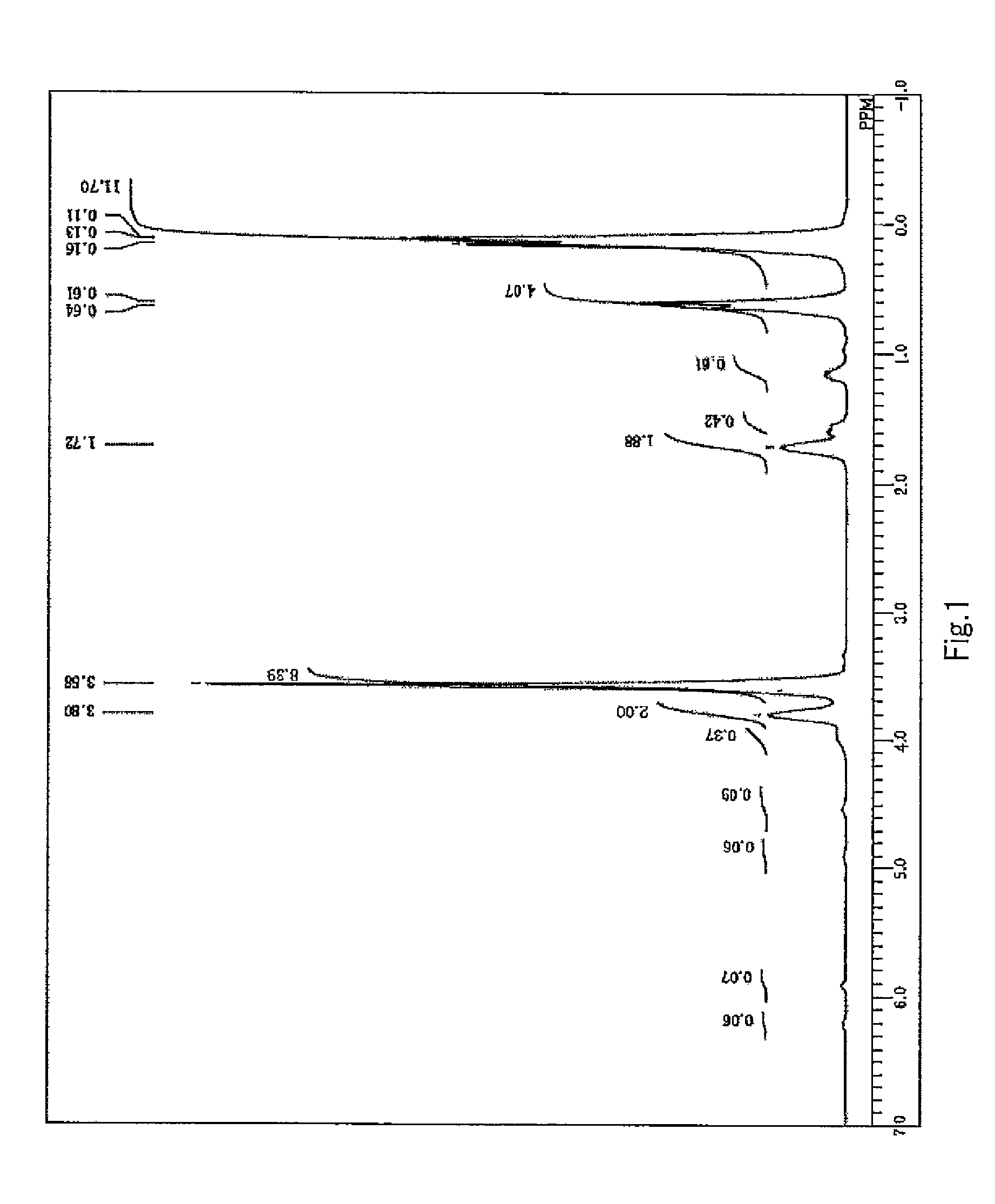Perfluoropolyether-polyorganosiloxane block copolymer and a surface treatment agent comprising the same
a technology of polyorganosiloxane and perfluoropolyether, which is applied in the field of polymer having a perfluoropolyether block and a surface treatment composition, can solve the problems of fish-eyes or opacity or cloudiness in coating, adversely affecting the optical properties of anti-reflective coatings or transparent substrates, and not being able to reproduce fine patterns, etc., to achieve the effect of high adhesion strength
- Summary
- Abstract
- Description
- Claims
- Application Information
AI Technical Summary
Benefits of technology
Problems solved by technology
Method used
Image
Examples
example 1
[0080]In a reactor, 200 g of perfluoropolyether compound represented by the following formula (1) having α-unsaturated bonds at both ends,
CH2═CH—CH2—O—CH2—Rf—CH2—O—CH2—CH═CH2 (I)[0081]Rf: —CF2(OC2F4)p(OCF2)qOCF2—
[0082]wherein p / q is 0.9 and p+q is about 45 on average, hereinafter represents p+q=45,
[0083]10.2 g of a siloxane compound represented by the following formula (II) having SiH bonds at both ends, and
[0084]
[0085]400 g of m-xylene fluoride were placed and mixed by stirring at a temperature of 90° C. To the mixture obtained, 0.0442 g, i.e., 1.1×10−7 mole as Pt, of a solution of a complex of chloroplatinic acid with a vinylsiloxane in toluene was added dropwise and then heated at a temperature of 90° C. for 4 hours. Subsequently, 16.7 g of a 1:1 adduct of tetramethyldisiloxane (HM) and vinyltrimethoxysilane (VMS), hereinafter referred to as HM-VMS adduct, was added dropwise and then heated at a temperature of 90° C. for 2 hours. By removing the solvent and unreacted HM-VMS addu...
example 2
[0094]The procedures used in Example 1 were repeated except that a perfluoroether with p / q being 0.9, and p+q being 23 on average was used in place of the perfluoropolyether of the formula (1). A liquid product, hereinafter referred to as “Copolymer 2” was obtained.
[0095]Copolymer 2 showed 1H-NMR spectrum as shown in FIG. 2 with the following chemical shifts from TMS.
[0096]
[0097]From the above data, Copolymer 2 was found to have the following structure:
[0098]
[0099]wherein Rf is bonded to CH2 group of Q. Copolymer 2 had a number average molecular weight, determined by GPC using polystyrene standards, of 5,000.
PUM
| Property | Measurement | Unit |
|---|---|---|
| temperature | aaaaa | aaaaa |
| thickness | aaaaa | aaaaa |
| thickness | aaaaa | aaaaa |
Abstract
Description
Claims
Application Information
 Login to View More
Login to View More - R&D
- Intellectual Property
- Life Sciences
- Materials
- Tech Scout
- Unparalleled Data Quality
- Higher Quality Content
- 60% Fewer Hallucinations
Browse by: Latest US Patents, China's latest patents, Technical Efficacy Thesaurus, Application Domain, Technology Topic, Popular Technical Reports.
© 2025 PatSnap. All rights reserved.Legal|Privacy policy|Modern Slavery Act Transparency Statement|Sitemap|About US| Contact US: help@patsnap.com



